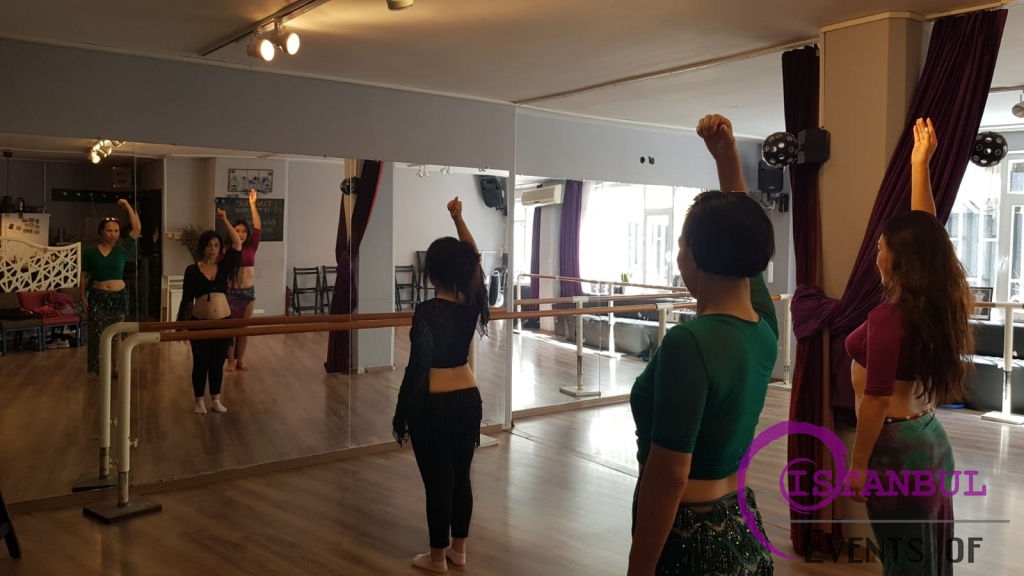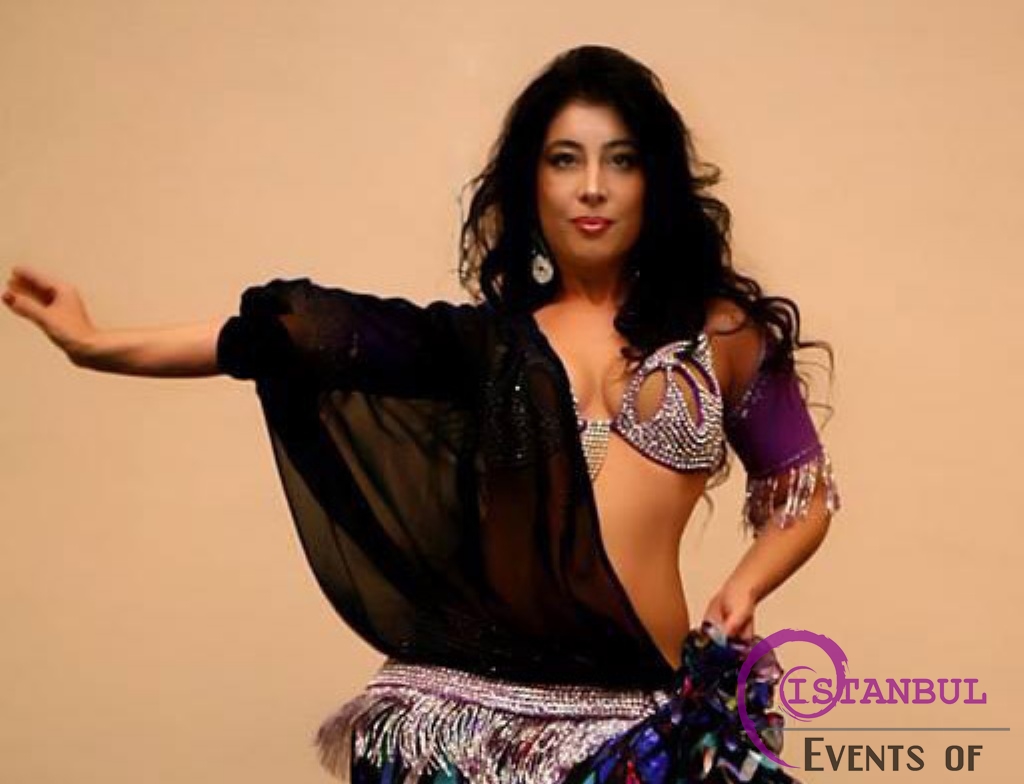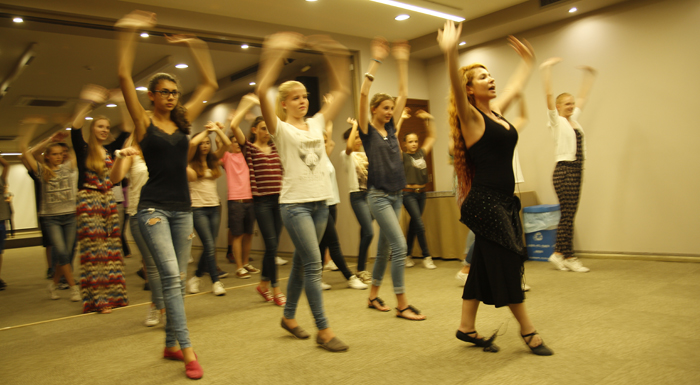Turkish Oriental Bellydance Workshops Istanbul
125,00 EUR
Private bellydance workshops Available All Year Long
Everyday appointment !
Description
Turkish Oriental Bellydance Workshops Istanbul
- Duration: 1.5 hours
- Location: Sultanahmet or Galata Dance Studio / ISTANBUL
- Lesson Teachings: available in English, French, Russian, Turkish
Overview ;
Belly Dance Lessons in Istanbul. Our dance studios are located in Sultanahmet ( Small Studio ) and Galata area ( Professional Dance Studio for bigger groups ), we can offer you Turkish Classical Oriental or Gypsy Style belly dance lessons during your visit in istanbul.
Our Lessons and What we Teach ;
- Classical and Modern Oriental Dance ( Turkish Belly Dance )
- Turkish Gypsy Style Dances ( Romani Dance )
- How to do impressive intros
- Drum solo technique
- Taqsim and floor dance technique
- Veil and isis wings technique
- Candle tray and sword balancing technique
- Çiftetelli – Classical Istanbul Chiftetelli
- Turkish Folkloric Dances
- Body Awareness
Roman and Turkish Tracian dances
- 9/8 Turkish Romani dances
- Karshilama dance
- Balkan style dances
- Folk Dances
- Blacksea – Horon
- Artvin
- Zeybek
What is Included ;
- Our lessons are private
- We teach beginner & advanced levels from our dancer teachers
- Dance studio and music system
- Water and beverages during the workshop
- Upon request, we can make weekly private masterclass as well.
Meeting Point ;
Here is our Art Studio Address ;
Google Maps : https://goo.gl/maps/uXuyRmELZsx
Events of Istanbul – Les Arts Turcs Art Studio
Alemdar Mh. Incili Cavus St.
No: 19 Floor : 3 (Behind The Underground Cistern)
Sultanahmet 34110
Istanbul, Turkey
Contact : Mr. Alp or Mr. Nurdogan ( Phone : +90 544 220 10 22 )
E-mail : info@eventsofistanbul.com
Cancellation Policy ;
Here in this link you can find the details about our cancellation policy.
Additional Information ;
Belly dance is a Western name for an Arabic style of dance developed in the Middle East. Some American devotees refer to it simply as “Middle Eastern Dance”.
In the Arabic language it is known as raqs sharqi (“eastern dance”) or sometimes raqs baladi (“national” or “folk” dance). The term “raqs sharqi” may have originated in Egypt.
Outside of the Middle East, raqs sharqi dancing was popularized during the Romantic movement in the 18th and 19th centuries as Orientalist artists depicted their interpretations of harem life in the Ottoman Empire. Around this time, dancers from different Middle Eastern countries began to exhibit such dances at various World’s Fairs; they often drew crowds that rivaled the technological exhibits.
Some mistakenly believe that Turkish oriental dancing is known as Çiftetelli due to the fact that this style of music has been incorporated into oriental dancing Greeks and Roma, illustrated the fact that the Greek belly dance is called Tsifteteli. However, Turkish Çiftetelli is more correctly a form of wedding folk music, the part that makes up the lively part of the dance at the wedding and is not connected with oriental dancing.
Turkish belly dance today may have been influenced Roma people as much as the Egyptian and Syrian/Lebanese forms, having developed from the Ottoman rakkas to the oriental dance known worldwide today. As Turkish law does not impose restrictions on Turkish dancers’ movements and costuming as in Egypt, where dancers are prevented from performing floor work and certain pelvic movements, Turkish dancers are often more outwardly expressive than their Egyptian sisters.
Many professional dancers and musicians in Turkey continue to be of Romani heritage as well. (However, it should be noted that people of Turkish Romani heritage also have a distinct dance style which is uniquely different from the Turkish Oriental style.) Turkish dancers are known for their energetic, athletic (even gymnastic) style, and particularly, until the past few years, their adept use of finger cymbals, also known as zils.
Connoisseurs of Turkish dance often say that a dancer who cannot play the zils is not an accomplished dancer. Another distinguishing element of the Turkish style is the use of the Karsilama rhythm in a 9/8 time signature, counted as 12-34-56-789. Turkish belly dance costumes can be very revealing, with the belt sometimes worn high up on the waist and split skirts which expose the entire leg, although dancers today are costuming themselves more like Egyptian dancers and wearing more modest “mermaid”-style skirts.
The Turkish style is emphasized further the dancer wearing high heels and often platform shoes. Famous Turkish belly dancers include Tulay Karaca,Nesrin Topkapi and Birgul Berai.
When immigrants from Turkey, Iran, and the Arab states began to immigrate to New York in the 1930s and 1940s, dancers started to perform a mixture of these styles in the nightclubs and restaurants. Often called “Classic Cabaret” or “American Cabaret” belly dance, these dancers are the grandmothers and great-grandmothers of some of today’s most accomplished performers, such as Anahid Sofian and Artemis Mourat.






